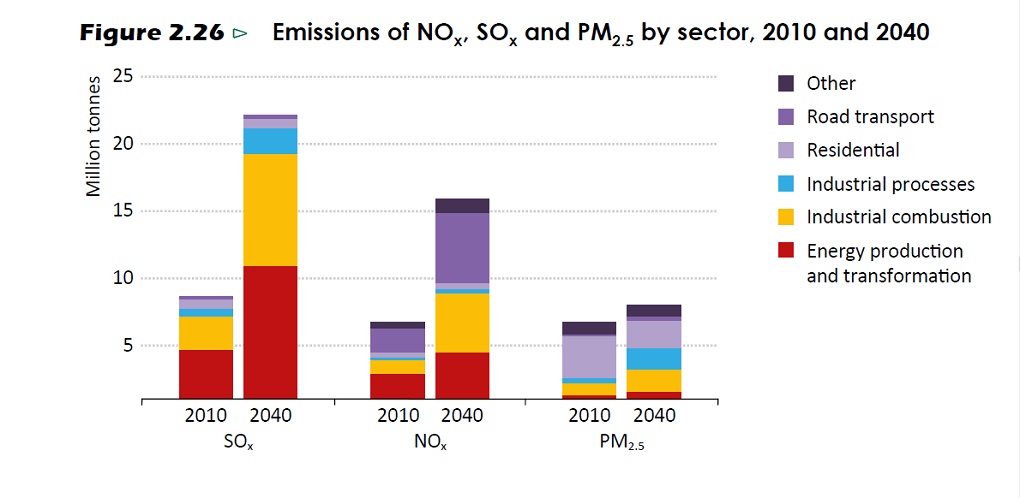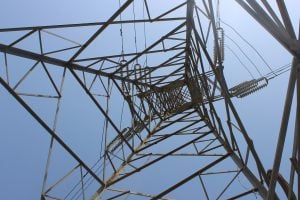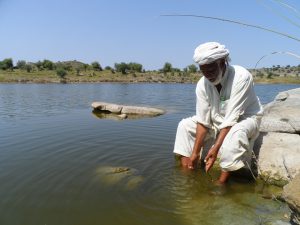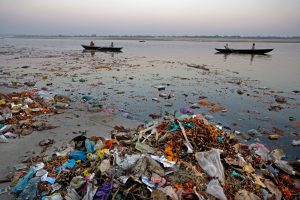India might have managed to fend off criticism at the climate change negotiations in Paris for not doing enough, but it can hardly escape the blame at home if it falters while dealing with the enormous environment challenges staring at it in the face as it moves forward on the path of economic development.
The country faces many challenges, especially in the fields of energy production, infrastructure development and transport which many believe are quite hard to face, particularly in the wake of legal limits on emissions of greenhouse gases and the health implications of carbon-intensive growth.
“As India has yet to build its more than 50% infrastructure for its 1.25 billion people and 100 smart cities, huge challenges lie ahead in terms of how this can be achieved without any environmental costs,” says Ritu Mathur, economic analyst at the New Delhi-based The Energy and Resources Institute (TERI).
India’s need for new infrastructure underlies the strong demand for energy-intensive goods, while the rising level of vehicle ownership keeps transport demand on an even steeper upward curve, observes the International Energy Agency (IEA) in its India Energy Outlook report. “Industrial energy use is buoyed by substantial growth in output of steel, cement, bricks and other building materials, and by the expansion of domestic manufacturing encouraged by the ‘Make in India’ initiative,” says the report.
According to the report, the addition of more than 250 million passenger cars, 185 million two and three-wheelers and 30 million trucks and vans to the vehicle stock by 2040 explains the sharp rise in India’s oil demand, mitigated only in part by new fuel efficiency standards.
Air pollution
Unregulated development is creating monsters like air pollution that threatens to take more lives than ever. IEA projects in its report that over the next 25 years till 2040, pollutants like sulphur oxide, nitrogen oxide and particulate matter (PM 2.5) will spiral because of coal combustion in power plants, transport emissions and the incomplete combustion of biomass in households and industry.
“Energy production and transportation makes the largest contribution to the increase in total emissions, which double in the period to 2040,” says the report.
The situation has already reached crisis point in many places, including the national capital New Delhi where air quality in November and the first half of December swung from “poor, very poor to severe”.
“Central Pollution Control Board (CPCB) has reported that in the month of November and first 10 days of December, Air Quality Index varied from poor, very poor to severe and is mainly attributed to increased Particulate Matter in ambient air, PM10 and PM 2.5 or both,” Environment Minister Prakash Javadekar was reported as saying in the upper house of parliament, Rajya Sabha.
“On reaching air quality at higher level, necessary action required to be taken by regulatory agency for example, may include: strict control on vehicle emissions, road dust/re-suspension of dust and other fugitive emissions, air pollution from biomass and municipal solid waste burning, industrial air pollution, air pollution from construction and demolition activities and intense monitoring of the ambient air quality, etc ,” Javadekar said in reply to a question.
According to the 2015 State of India’s Health report issued by the New Delhi based think-tank Centre for Science and Environment, air pollution is one of the top 10 killers in the world and is the fifth leading cause of death in India.
“Death toll due to uncontrolled air pollution-related illnesses alone has increased worldwide by a whopping 300 per cent in the last decade: from 800,000 in year 2000 to 3.2 million in 2012… In Delhi, which was named as the most polluted city of the world by WHO in 2014, air pollution is responsible for 10,000 to 30,000 annual deaths,” the CSE’s report has revealed.
The alarmingly high levels of pollution have prompted the Delhi state government to experiment with “car rationing” by introducing the odd-even rule for private cars – thereby halving the number of cars on the road – from January 1-15.
As concern mounted with doctors saying that the number of people suffering respiratory diseases had spiked alarmingly, the country’s apex court also stepped in with the decision to ban the registration of new diesel SUVs and high end cars – of 2,000 cc and above – till March 31, 2016.
With air pollution becoming top-of-the-mind issue across the city and its suburbs, called the National Capital Region, the sale of air purifiers went up while those who couldn’t afford it, had no option but to breathe the polluted air – thereby giving rise to the latest form of inequality in India.
Global perspective
According to WHO estimates, 644,993 people died in India in 2010 alone due to diseases related to air pollution – a death toll exceeded only by China with 1,357,353 deaths. China has already started taking measures like ordering limits on cars, factories and construction sites through red-alerts. Last week, the Chinese government claimed that it had reduced pollution in Beijing by 30%.
“By putting mitigation policies in place, countries like China and India can save those dying because of pollution-related diseases,”, WHO’s Diarmid Campbell said during an event, ‘Health, Climate and Air Pollution: Why a strong Climate Change Agreement is Critical to Global Public Health’ at CoP21 in Paris. WHO estimates that more than seven million people die each year globally from air pollution related diseases.
“The health impacts of increasing pollution are considerable. The rise in outdoor PM2.5 emissions alone is calculated to lead to a reduction in life expectancy of more than seven months (this is in addition to the 16.8 months in reduced life expectancy that is a result of current PM2.5 levels). This corresponds to a 140% increase in premature deaths, which reach 1.7 million in 2040,” says the IEA report.
Indoor air pollution from the continued though diminished use of solid biomass for cooking, the report says, could be expected to add considerably to this number. “In addition, the rise in ground-level ozone leads to crop losses. By 2040, the increase in ground-level ozone gases leads to a 13% decrease in wheat yield and will have adverse impacts additionally on soybean, rice and maize crops.”
The way forward
“The way forward would be to reduce the source of air pollution—mainly revamping our transportation systems and forcing the industry to come up with cleaner technologies. But people are not aware of these linkages and continue to junk public transport,” says Sunita Narain, director general of CSE.
The IEA’s report has also suggested five steps which can improve India’s air quality. These include:
■ Tighter controls on emissions from large combustion plants. These would be more stringent for new plants but also require the retrofit of existing plants with appropriate equipment like flue gas desulphurisation, NOx controls or high efficiency de-dusters. Measures would also include a requirement to use best available technologies for certain industrial processes, including energy-intensive industries such as iron and steel, cement, chemicals and others.
■ The introduction of maximum sulphur content requirements for liquids fuels, at the level of 1% for heavy fuel oil, 0.1% for light fuel oil and sulphur-free fuels (a maximum of 10 parts per million) for transport.
■ Higher standards for exhaust emissions from road vehicles, up to the equivalent of Euro 6 for light-duty cars and trucks, Euro 6 for heavy-duty trucks and Euro 3 for motorcycles and mopeds, along with measures for non-road vehicles (tractors and other agricultural/construction vehicles, trains, ships etc.)
■ Low-cost measures to control emissions of volatile organic compounds from liquid fuels production, storage and distribution, such as leak detection and more efficient covers and seals.
■ Accelerated roll-out of improved efficiency biomass cookstoves, accompanied by continued efforts to encourage switching from solid biomass to LPG and electricity.
![<p>India will add 250 million cars, 185 million 2 and 3 three-wheelers and 30 million trucks and vans to its roads by 2040 [image by Lingaraj GJ]</p>](https://dialogue.earth/content/uploads/2015/12/pollution-traffic-jam-e1451362864200.jpg)






